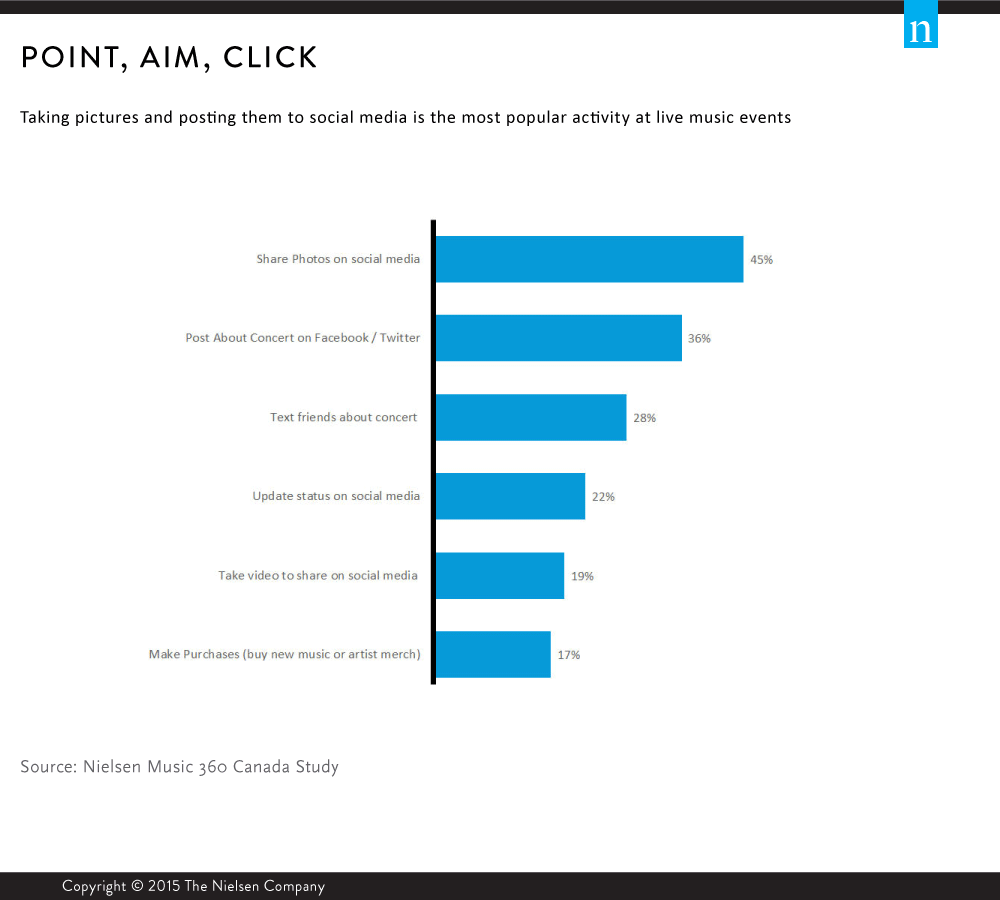The summer festival season in Canada is in full swing, as two of the country’s best-known music events, the Toronto and Montreal Jazz Fests, kicked off the celebration as June fades into July. Collectively, more than 4,500 musicians and entertainers will perform at the two festivals, and over 2.5 million visitors will visit the cities. Canadians are big fans of live music. According to Nielsen’s Music 360 Canada 2015 report, more than half of Canadians claim they attended a live concert in the past year, and 17% said they attended a music festival.
The report noted that 52% of Canadians said they attended live music events in the last year. Twenty-eight percent attended a concert with a main headliner, 21% attended a smaller event or a local live music session, and 17% attended a music festival. July’s Calgary Stampede was the most well-known festival among Canadians, as over half of all respondents were aware of the event, followed by more than 40% saying they were aware of the Montreal and Toronto Jazz Fests.
But Canadian festival goers aren’t just addicted to live events; they’re dedicated music consumers. They spend the most amount of time among the general Canadian population per week listening to music (33 hours), and they spend the most money annually on music ($245), even when not factoring the cost of tickets. In fact, more than half said they could afford to spend more than they currently do.
Festival fans are clearly highly motivated by music—a big opportunity for brands. In addition to onsite activations, online social activity taking place at festivals (sharing photos and videos, posting updates, texting and even making purchases) may provide opportunities for brand sponsors to reach fans who aren’t even at the show. Activations that include free music downloads and sweepstakes enjoy a high degree of favorability among consumers.

METHODOLOGY
The Nielsen Music 360 Canada Study is a comprehensive in-depth study of consumer interaction with music in Canada. Data for the study was collected April 12-27, 2015, among 3,500 consumers ages 13+. Surveys were conducted online in English and French using a third-party panel, and data was weighted to the Canadian census population based on age, gender, race, education and household size.



